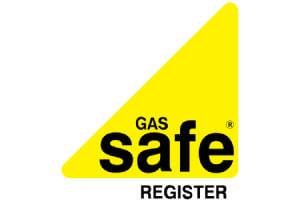
Electrical diagnostic services are essential for ensuring the safety and efficiency of a property’s electrical infrastructure. Through precise detection and analysis, these services can pinpoint issues that may not be visible to the naked eye, such as hidden wiring problems or potential circuit overloads. This early detection is crucial, as it allows property owners to address minor issues before they develop into major hazards, potentially leading to fires or electrical shocks. By understanding the specific processes involved in electrical diagnostics and recognizing the signs that suggest a need for such an evaluation, property owners can better appreciate the critical nature of this service. What remains to be explored is how these diagnostics not only prevent disasters but also contribute to the longevity and efficiency of electrical systems.
Key Takeaways
- Early detection of faults mitigates risks of fire and electrocution, enhancing property safety.
- Systematic checks prevent overloads and faulty installations, ensuring operational reliability.
- Tailored diagnostics for different properties adhere to safety and operational standards.
- Regular maintenance and advanced tools identify and resolve anomalies before they escalate.
- Compliance with regulatory standards prevents legal issues and guarantees system safety.
What Is an Electrical Diagnostic Service?
An electrical diagnostic service is a critical procedure employed by technicians to accurately identify and pinpoint faults in various electrical systems and components. This specialized service utilizes advanced tools and techniques to systematically evaluate the electrical network, ensuring that every potential issue is examined.
The process often begins with a comprehensive assessment of the electrical schematics and operating history, followed by physical and functional tests using diagnostic equipment like multimeters, oscilloscopes, and specialized software.
For those searching for “electrical diagnostics near me,” it is essential to choose providers who are capable of delivering precise diagnostics with the latest technology. This precision is crucial in avoiding misdiagnoses that can lead to further complications and higher costs.
Speaking of costs, the electrical diagnostic cost can vary significantly depending on the complexity of the system and the specific nature of the fault. It is an investment towards ensuring safety and efficiency within an electrical system, potentially saving substantial amounts in future repair costs and downtime.
Professionals conducting these diagnostics are highly skilled in identifying anomalies that might not be obvious to untrained eyes, making their expertise invaluable for maintaining the integrity and functionality of electrical infrastructures.
Identifying Critical Electrical Faults: What Diagnostics Can Reveal
Building on the foundation of understanding what an electrical diagnostic service involves, we now explore the specific faults such diagnostics can uncover. Comprehensive electrical diagnostics are indispensable for identifying latent issues that could lead to severe malfunctions. This process pinpoints areas requiring urgent attention, allowing for timely interventions before costly failures occur.
| Fault Type | Implications | Diagnostic Method |
|---|---|---|
| Overloads | Circuit damage | Thermal imaging |
| Ground faults | Risk of electrocution | Circuit analyzers |
| Arc faults | Fire hazards | Oscilloscopes |
| Loose connections | Inefficiency, overheating | Voltage testers |
| Voltage irregularities | Equipment malfunctions | Multimeters |
These diagnostics delve into the integrity and functionality of electrical systems. Overloads, for instance, can be detected through thermal imaging, revealing hot spots caused by excessive current flow. Ground faults, presenting serious safety risks, are identifiable with specialized circuit analyzers. Similarly, arc faults, which could lead to fires, are detected using oscilloscopes that monitor electrical waveforms for irregular patterns.
Voltage irregularities and loose connections can systematically degrade performance and lead to premature equipment failure. Using multimeters and voltage testers, technicians can assess voltage levels and connection stability, ensuring that every component functions within specified parameters. This meticulous approach to fault identification is crucial for maintaining robust electrical infrastructure and operational continuity.
The Role of Electrical Diagnostics in Preventing Fire and Shock Hazards
Electrical diagnostics play a critical role in safeguarding facilities against the threats of fire and electrocution. By meticulously analyzing the electrical systems within a structure, these diagnostics help in the early detection of potential faults that could lead to catastrophic outcomes. The process involves a systematic examination of electrical components, such as wiring, circuit breakers, and connectors, to identify any signs of wear, damage, or malfunction.
This proactive approach is crucial in mitigating risks associated with electrical failures, which are often precursors to fires and electrical shocks.
The significance of electrical diagnostics extends beyond simple fault detection. It encompasses the evaluation of electrical system performance, ensuring that all components operate within their specified limits. Overloaded circuits, faulty insulation, and improper grounding are typical findings that could pose serious hazards.
By addressing these issues promptly, electrical diagnostics serve as an essential preventive measure, enhancing the overall safety of the electrical infrastructure.
Moreover, such diagnostics are instrumental in maintaining compliance with safety standards and regulations, which mandate the integrity and safety of electrical systems. This not only helps in preventing dangerous incidents but also fortifies the reliability and efficiency of the electrical setup, thereby safeguarding both property and lives.
Step-by-Step: The Electrical Diagnostic Process Explained
Understanding the electrical diagnostic process begins with a thorough visual inspection of the system’s components. This initial step involves examining wiring, connections, and equipment for signs of wear, damage, or overheating. Technicians look for discoloration, corrosion, or any deformities that could indicate potential failures. This visual assessment is crucial as it helps in identifying obvious physical defects that could lead to more severe problems if left unaddressed.
Following the visual inspection, electrical measurements are conducted using specialized tools such as multimeters, clamp meters, and insulation resistance testers. These instruments allow for the precise evaluation of current, voltage, and resistance levels within the electrical circuits. Such data is essential for assessing the system’s performance and identifying deviations from expected electrical norms.
The next phase involves a detailed analysis of the gathered data. Technicians apply advanced diagnostic techniques to interpret the results, identifying patterns or anomalies that suggest underlying issues. This analytical process often utilizes software that models electrical systems and simulates various scenarios, predicting potential problems before they manifest physically.
Tailored Diagnostics for Residential, Commercial, and Industrial Properties
Tailored electrical diagnostics are essential for ensuring the safety and efficiency of electrical systems across various types of properties, each presenting unique challenges and requirements. For residential properties, diagnostics focus on consumer safety and compliance with local residential codes. Commercial settings require a more comprehensive approach due to their complex wiring systems and higher power demands. Industrial properties, with their heavy machinery and continuous operations, necessitate robust diagnostic protocols to prevent operational downtime and ensure worker safety.
Here is a comparative overview of tailored diagnostics across different property types:
| Property Type | Key Focus Areas |
|---|---|
| Residential | Safety, code compliance, energy efficiency |
| Commercial | System complexity, regulatory compliance, operational continuity |
| Industrial | Machinery safety, system durability, energy optimization |
In each scenario, the diagnostic process must accurately identify potential electrical failures and inefficiencies. This involves a meticulous analysis of circuit loads, grounding systems, and protective devices. For industrial environments, it also includes the scrutiny of high-voltage connections and electromagnetic interference. The diagnostics deliver actionable insights, ensuring each property type adheres to its specific operational and safety standards, thereby mitigating risks and enhancing performance.
Proactive Maintenance: The Financial and Operational Benefits of Early Detection
Proactive maintenance, involving the early detection and rectification of potential electrical issues, significantly reduces the likelihood of costly breakdowns and extends the lifespan of electrical systems.
By employing advanced diagnostic tools and techniques, such as infrared thermography, ultrasonic testing, and voltage testing, maintenance teams can identify and address electrical anomalies before they escalate into major concerns. This preemptive approach not only prevents equipment failures but also minimizes unplanned downtime, thereby enhancing operational efficiency.

Financially, the advantages of proactive maintenance are substantial. Early detection of electrical faults allows for the optimization of repair schedules and resource allocation, reducing the need for emergency interventions, which are often exponentially more expensive than planned repairs.
Moreover, regular maintenance preserves the integrity of electrical components and prolongs their operational viability, which translates to a lower total cost of ownership and reduced capital expenditure on new equipment.
Operationally, proactive maintenance contributes to a safer working environment by mitigating the risk of electrical fires and other safety hazards associated with system failures.
This strategic focus on maintenance also aligns with regulatory compliance and standards, which further safeguards businesses against potential legal and financial penalties.
Key Indicators Your Property Requires Immediate Electrical Diagnostics
While proactive maintenance is invaluable for preserving electrical systems, there are certain situations where immediate diagnostic interventions are necessary. Recognizing the signs that demand such actions can prevent catastrophic failures and ensure safety.
Here are four critical indicators that your property requires immediate electrical diagnostics:
- Frequent Circuit Breaker Trips: Regular disruptions in your electrical circuit can indicate an overloaded system or faulty wiring that needs urgent attention.
- Unusual Heating of Outlets or Switches: Any sign of heat around electrical outlets or switches signals an immediate danger, typically reflecting poor wiring or an overloaded circuit.
- Persistent Burning Smell: A burning odor emanating from any electrical panels or circuits is a clear sign of overheating components, often a precursor to electrical fires.
- Flickering or Dimming Lights: This could indicate a fluctuation in your power supply or serious issues within your main electrical panel, both of which require comprehensive diagnostics.
Identifying and responding to these indicators promptly through expert electrical diagnostics can mitigate risks, safeguarding your infrastructure and preventing potential losses.
This proactive approach not only ensures operational continuity but also maintains the integrity of your electrical installations.
Regulatory Compliance: Meeting Health and Safety Obligations with Diagnostics
In the realm of electrical diagnostics, adhering to regulatory standards is not only a legal mandate but also a critical component of maintaining health and safety. Comprehensive electrical diagnostic procedures ensure that all installations and maintenance work conform to national codes such as the National Electrical Code (NEC) in the United States, or other relevant standards globally, including the IEC 60364 internationally. These standards are designed to protect buildings from electrical hazards by ensuring that all systems are up to the required safety specifications.
The process involves systematic checking of wiring, circuits, and electrical components using advanced diagnostic tools that measure current, voltage, and resistance, identify ground faults, and test insulation integrity. This not only aids in complying with legal obligations but also enhances the operational reliability and extends the lifespan of electrical systems.
Failure to meet these standards can result in severe legal repercussions including fines, shutdowns, or worse, catastrophic accidents.
Moreover, regular diagnostics support proactive maintenance strategies that preempt potential failures and mitigate risks. For instance, thermal imaging can detect overheated components before they fail, thereby preventing fire hazards.
Employing such diagnostics is essential for ensuring ongoing compliance, optimizing system performance, and safeguarding property and lives.
Conclusion
In conclusion, electrical diagnostic services are indispensable for ensuring the safety and efficiency of electrical systems across various property types. By leveraging advanced diagnostic tools to detect and address faults early, these services mitigate risks of fire and electrical shock, enhance regulatory compliance, and promote cost-effective operations through proactive maintenance. The critical role of electrical diagnostics in maintaining system integrity and protecting assets underscores its value in contemporary electrical safety management strategies.







